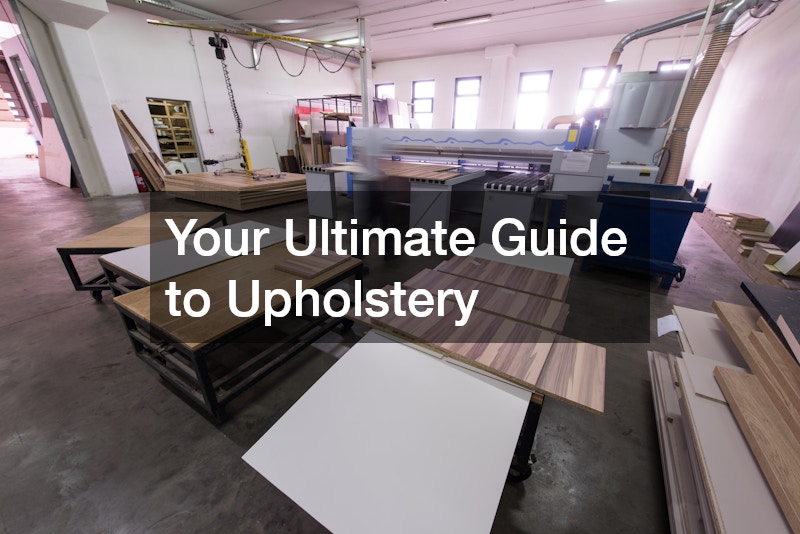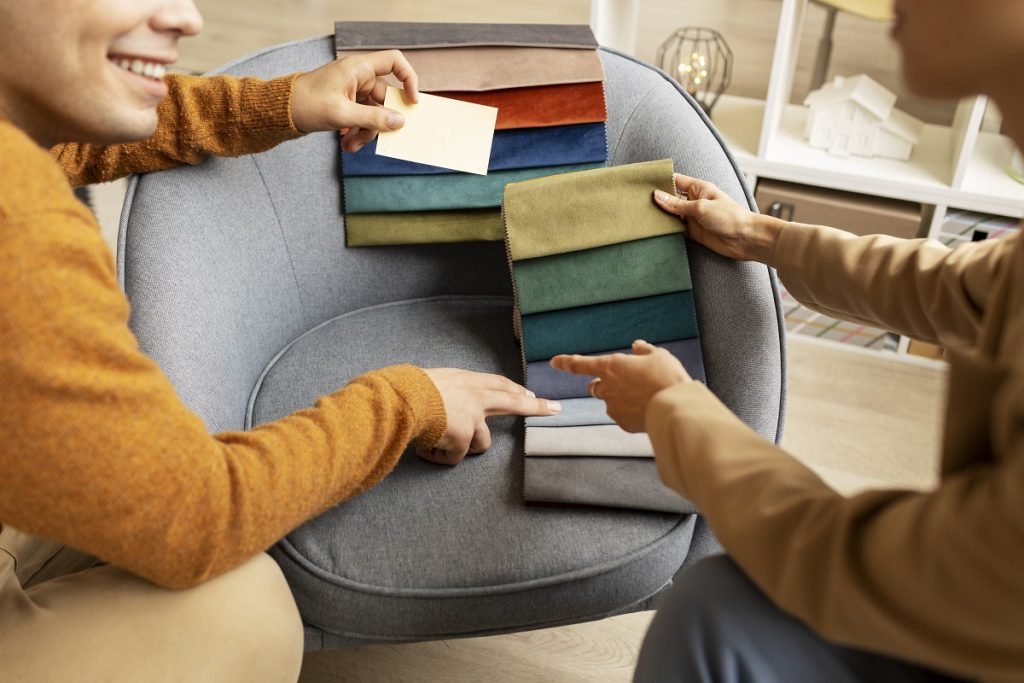
Your Ultimate Guide to Upholstery

Upholstery is the art of furnishing or covering furniture, particularly seating, with padding, springs, fabric, and other materials to provide both comfort and style. Whether you’re working on a home improvement project, refreshing a commercial space, or restoring an heirloom piece, understanding the fundamentals of upholstery can help you make informed choices. From selecting fabrics to maintaining upholstered pieces, here’s your ultimate guide to upholstery.
What is Upholstery?
At its core, upholstery involves creating layers of support and comfort on furniture frames, typically for seating such as sofas, chairs, and ottomans. It combines structural elements like springs, padding, and fabric to build durable, comfortable, and attractive furniture. The materials and techniques used vary depending on the type of furniture, its purpose, and the desired style. For example, traditional upholstery might use natural fibers like cotton, wool, or leather, while modern upholstery often incorporates synthetic fabrics or foam padding for added durability and ease of maintenance.
Types of Upholstery Materials
The choice of upholstery material is crucial, as it affects both the look and longevity of a piece. Here’s a breakdown of popular upholstery materials:
- Leather: Known for its durability and timeless appeal, leather is a premium upholstery choice often seen in high-end homes and offices. Leather ages gracefully, becoming softer over time, though it does require specific care to prevent cracking or fading.
- Vinyl: This synthetic material is commonly used in commercial settings due to its affordability and easy maintenance. Vinyl is highly resistant to stains and moisture, making it ideal for high-traffic areas where durability is essential.
- Fabric Blends: Many upholstery fabrics are made from blends of natural and synthetic fibers, offering the best of both worlds—comfort, durability, and resistance to stains or fading. Polyester blends, for example, are widely used in residential upholstery due to their resilience and softness.
- Microfiber: Made from ultra-fine synthetic fibers, microfiber upholstery is soft, stain-resistant, and easy to clean. It’s a popular choice for families or pet owners as it resists spills and dirt.
Different Types of Upholstery Techniques
Upholstery is a craft with various techniques that add function and style. Understanding these methods can help you choose the right design elements for your furniture:
- Tufting: This classic technique involves securing buttons through the fabric and padding, creating a patterned surface of depressions. Diamond and channel tufting are popular styles, often seen in traditional furniture designs.
- Piping: Piping, or welting, is a decorative trim sewn along the seams of the upholstery. It can be made from the same or contrasting fabric, adding a finished look to cushions, arms, and edges.
- Channeling: This technique arranges padding in parallel rows, offering a structured look that’s both stylish and supportive. It’s a design element frequently used in modern furniture and headboards.
Each of these techniques brings unique aesthetic and functional qualities, allowing for customization and stylistic expression in upholstery.
Upholstery for Different Spaces
The right upholstery can elevate any space, but specific types may work better depending on the environment:
- Residential Upholstery: For homes, the focus is often on comfort and aesthetics. Fabrics like cotton, linen, or leather are common choices, as they provide a cozy, inviting feel. Patterned fabrics, soft textures, and comfortable padding are popular for residential upholstery, creating a warm and welcoming environment.
- Commercial Upholstery: In high-traffic spaces such as restaurants, hotels, or offices, durability and ease of cleaning are paramount. Vinyl, treated fabric blends, or stain-resistant finishes are frequently used to withstand constant use. Commercial upholstery often requires additional padding for extended comfort and ergonomic support to keep customers or clients comfortable.
- Outdoor Upholstery: Outdoor upholstery requires weather-resistant materials like acrylic, polyester, or vinyl-coated fabric to withstand elements like moisture, UV rays, and temperature changes. Outdoor fabrics are specially designed to resist mold, mildew, and fading, ensuring the furniture remains attractive and functional.
How to Choose the Right Upholstery Fabric
Selecting the right upholstery fabric can be a bit daunting, given the many options available. Consider the following factors:
- Durability: If you’re upholstering pieces for high-traffic areas, choose fabrics with a high double-rub count (a measure of abrasion resistance). Materials like leather, polyester blends, and vinyl tend to hold up well over time.
- Maintenance: Easy-to-clean fabrics, like microfiber or treated polyester, are ideal for households with children or pets. Stain-resistant fabrics make cleaning spills much easier and help keep the upholstery looking fresh.
- Color and Pattern: Light colors create an open and airy look, while darker hues add warmth and hide stains better. Patterns can hide minor stains and imperfections, making them a good choice for busy households or commercial spaces.
- Texture and Comfort: Choose a fabric that feels comfortable, especially for pieces like sofas or chairs that will see frequent use. Plush, soft textures like velvet or chenille add luxury, while smooth fabrics like leather or vinyl provide a sleek, modern look.
Reupholstering: Refreshing Furniture with Style and Function
While upholstering refers to the initial process of covering furniture with fabric and padding, many pieces benefit from reupholstering—the art of renewing and refreshing existing furniture by replacing worn or outdated materials. Reupholstering is a practical way to extend the life of your furniture and update its style without buying new pieces. Whether you’re tackling a sofa, ottoman, or a smaller piece, this process can dramatically change the look and feel of your space. For those interested in how to reupholster a chair, the process typically involves carefully removing the old upholstery, inspecting and repairing the frame or padding if needed, and then attaching new fabric with precision to ensure a smooth, professional finish. The cost to reupholster a chair depends on several factors including fabric quality, chair style, and whether you handle the project yourself or hire a professional upholsterer. By understanding these elements, you can make cost-effective choices that balance style, comfort, and budget.
Upholstery plays a crucial role in both the comfort and appearance of furniture, whether in a home, office, or commercial space. By choosing the right materials, understanding different techniques, and maintaining your upholstered pieces, you can create a stylish and functional environment that lasts. With this ultimate guide to upholstery, you’ll have the knowledge to select fabrics, maintain your furniture, and make informed decisions, ensuring your upholstered pieces bring long-lasting beauty and comfort to your space.
.






